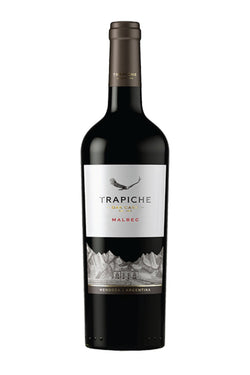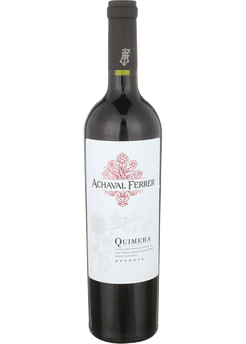Malbec Alternatives
On April 18, 2024, someone told me they Malbec because it is bold and they think it is full bodied. Here are three similar wines to try instead.
Wine recommendations by: Jessyca Frederick |

The ask
The wine: Malbec
Likes: It’s bold, full bodied(?)!
Doesn’t like: Not much
BUY the Malbec
About the wine
Well, that’s a pretty broad request with not a lot of details about preferences. And that’s okay, because sometimes we don’t know what we like or why — especially at the beginning of our wine journey. You are correct that generally Malbec is full bodied!
Here are some things to know about Malbec sold in the US:
- Region: Most Malbec sold in the US comes from Argentina. Argentina has three main Malbec-producing regions to know about, with Mendoza being the most prolific. Within Mendoza, Uco Valley (look for Tupungato) and Luján du Cuyo / Maipú tend to offer more premium selections.
- Taste: Strongest: Black plum, raspberry, black cherry, and olive. Cheaper Malbec usually tastes strongly of vanilla, cocoa, or espresso (all of which come from the oak used during production).
- Mouthfeel: Tannins vary but often this is something people either like or don’t like. At your stage of drinking wine, it’s likely you don’t know the difference between tannin and other boldness in your mouth (like the astringency from alcohol, as both have a drying effect).
At this time, you should be exploring all of the different types of Malbec you can buy — from cheap to premium, from each of the major regions (and probably subregions), other aspects farming practices, and what trusted sources think are excellent bottles. Here is a smattering of Malbecs I recommend you try and three other wines you should try, too.
My recommendations

Black Cabra Malbec Mendoza ($13-15)
Why I picked it for you: hugely popular Malbec at Wine Access where they keep ordering more and selling out. A premium Malbec for just $13 is definitely worth a try.
Things you might not like: I can’t imagine what’s not to like here.
Buy the Black Cabra Malbec Mendoza

Organic Malbec ($15-30)
Why I picked it for you: most of the Malbec sold in the US is produced conventionally — like it or not, that’s how we keep wine cheap. For many people, organic wine is the only wine they want to drink and finding it can be really difficult (wine stores suck as merchandising organic wine).
Things you might not like: these wines are more likely to highlight the fruit and character of the grape rather than reliance on oak to cover substandard grapes. That means you’ll get less of the vanilla, cocoa, espresso characteristics which might be part of what you like.
Buy the Organic Malbec

Zuccardi Malbec ($20-60)
Why I picked it for you: Zuccardi is a well-respected producer of Malbec, making wines at a variety of price points. If you have a favorite grape or region, it’s always a good idea to get to know top producers. It’s a good shortcut for buying wine in restaurants or picking something quickly at a wine shop.
Things you might not like: probably nothing, but exploring the Zuccardi line-up of Malbecs will help you figure out what price range you want to buy in and which regions work for you.
Buy the Zuccardi Malbec

Malbec Blends ($15-40)
Why I picked it for you: logically speaking, if you like Malbec, you might also like Malbec blends. To be clear, Malbec originally comes from the Bordeaux region in France and is sometimes present in Bordeaux red wine blends. That’s not what I mean though. Creative winemakers are blending Malbec with other bold red wines for interesting new flavors.
Common combinations include Cabernet Sauvignon + Malbec, Cabernet Franc + Malbec (this sounds interesting to me!), and Bonarda + Malbec. Most of these blends come out of Argentina, too.
Things you might not like: hard to say at this time.
Buy the Malbec Blends

South American Bordeaux Grapes (15+)
Why I picked it for you: one thing you might like about Malbec is the expression of Argentinan terroir. Terroir is the French word which describes that a wine tastes like the place its grapes were grown. The wine world argues about the importance of Terroir all the time (I call it terroir terror), but in my experience, terroir matters a lot. If you like Argentinian Malbec, it’s worth checking out other Argentinian wines.
Argentina grows a lot of Bordeaux grapes (especially Cabernet Sauvignon, Merlot, and Cabernet Franc). I also recommend trying Argentina’s best known white wine — Torrontés! It tends to be fruity and sometimes a touch sweet, but usually well balanced with enough acid to make it delicious and food-friendly.
Things you might not like: hard to say at this time.
Buy the South American Bordeaux Grapes

Syrah ($20+)
Why I picked it for you: Syrah is a grape that produces bold, full-bodied wines. Despite being made in a lot of different wine regions, it almost always tastes like Syrah and not like its winemaking. This makes it a good grape to know for bold wine lovers. You can explore options from California’s Central Coast where the wines will be bold and fruity, options from the Rhône Valley in France (it’s ancestral home) which will be bold and show more herbal characteristics, and you can explore Syrah from all over the Pacific Northwest where the expression is often less bold than California, but still fruity.
One of California’s best Syrah producers is Stolpman Vineyards in the Ballard Canyon region of Santa Barbara County. They’re relatively affordable Estate Syrah is an excellent place to start.
Things you might not like: some of Syrah’s strongest flavor profiles might not work for you. Black pepper, black olive, tobacco, leather, and "chaparral" herbal flavors might be a turn-off.
Tip: be sure to let a young Syrah breathe for a while before you drink it. If you can decant it, that’s ideal (30 minutes is sufficient). If you can aerate it, that’s a second best option. Lastly, just open the bottle an hour before you plan to drink it.
Buy the Syrah
Notice: I hold no formal wine credentials. I am a wine geek who has consumed 1000+ of bottles from 100+ different wine clubs and 1000s more bottles that didn’t come from those wine clubs. I do not accept payment for inclusion here, and I do not accept payments to influence my recommendations.
Then why am I recommending wine? I know a lot about wine. Particularly I know some things average wine drinkers don’t usually know — like how to research a wine and decide if it’s worth buying. Typically wine buyers rely on critics reviews and scores when evaluating a new-to-them wine. Sometimes they search on Reddit.
Most of the time, the information uncovered isn’t truly useful because everyone has a different palate. The trick is in learning what you like and why, and then seeking similar wines to try.
Instead of telling you what I like (which I do in my wine reviews), this is about telling you what you might like, based on what you know you like (and sometimes don’t like). So I recommend wines to help wine lovers expand what they are currently drinking in the hopes that they’ll learn how to find wines on their own, too.
How do you make money at this? I find the wines I think are of interest using my wine marketplace (no AI is used anywhere in this process). It has inventory from most major online wine stores (Total Wine, Wine.com, and Wine Access) and dozens of other places to buy wine, too. Each wine I recommend comes with a "Shop this wine" link, which sends you to my marketplace. When someone buys a wine from my marketplace, I sometimes earn a commission.
I’ll probably spend around 30 minutes assembling your personal wine recommendations, but you are not obligated to buy anything. If you do buy something I recommend, whether locally or online, please let me know if you liked it! (Or if I missed the mark.)
Learn more about me or get in touch.